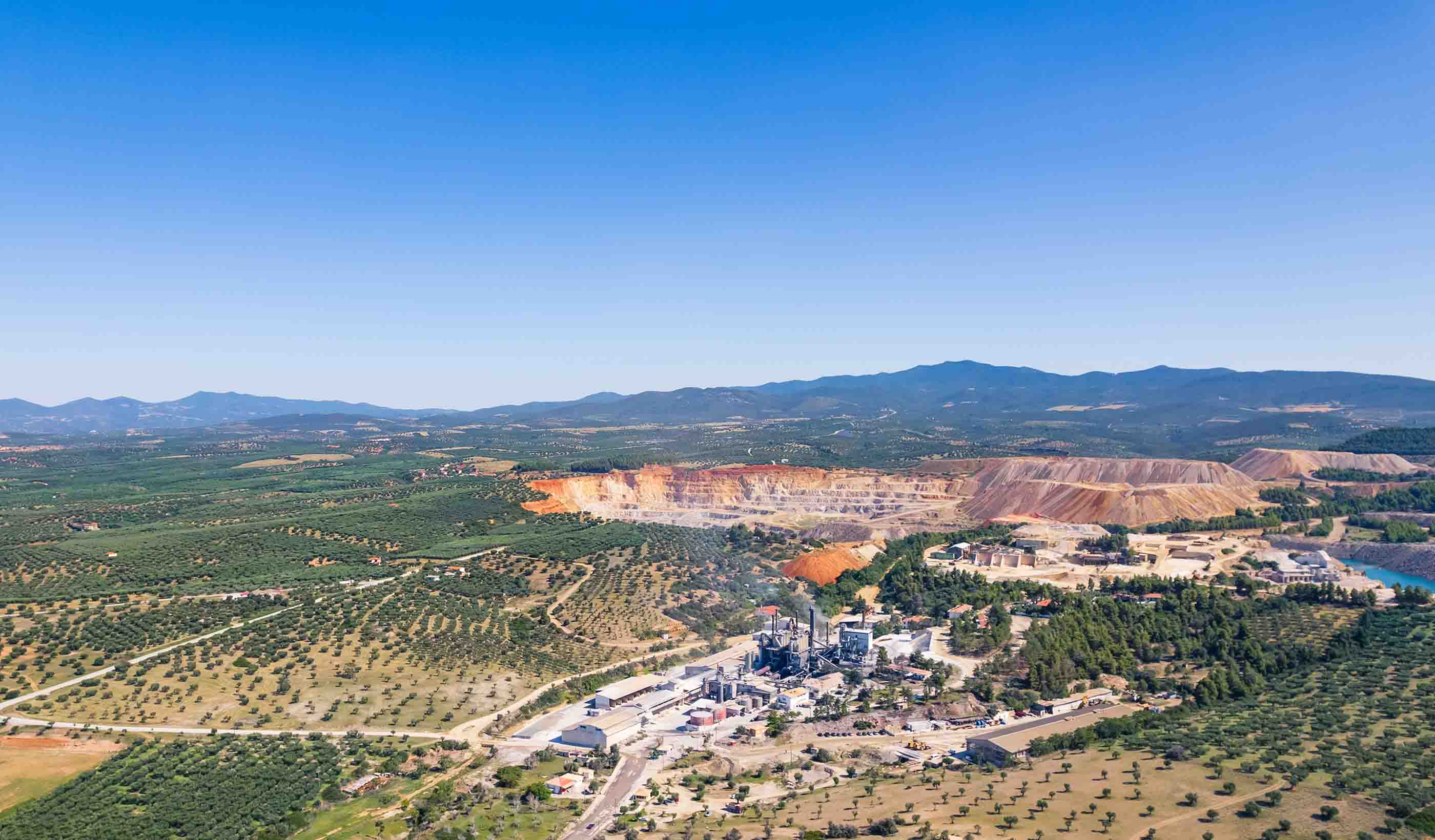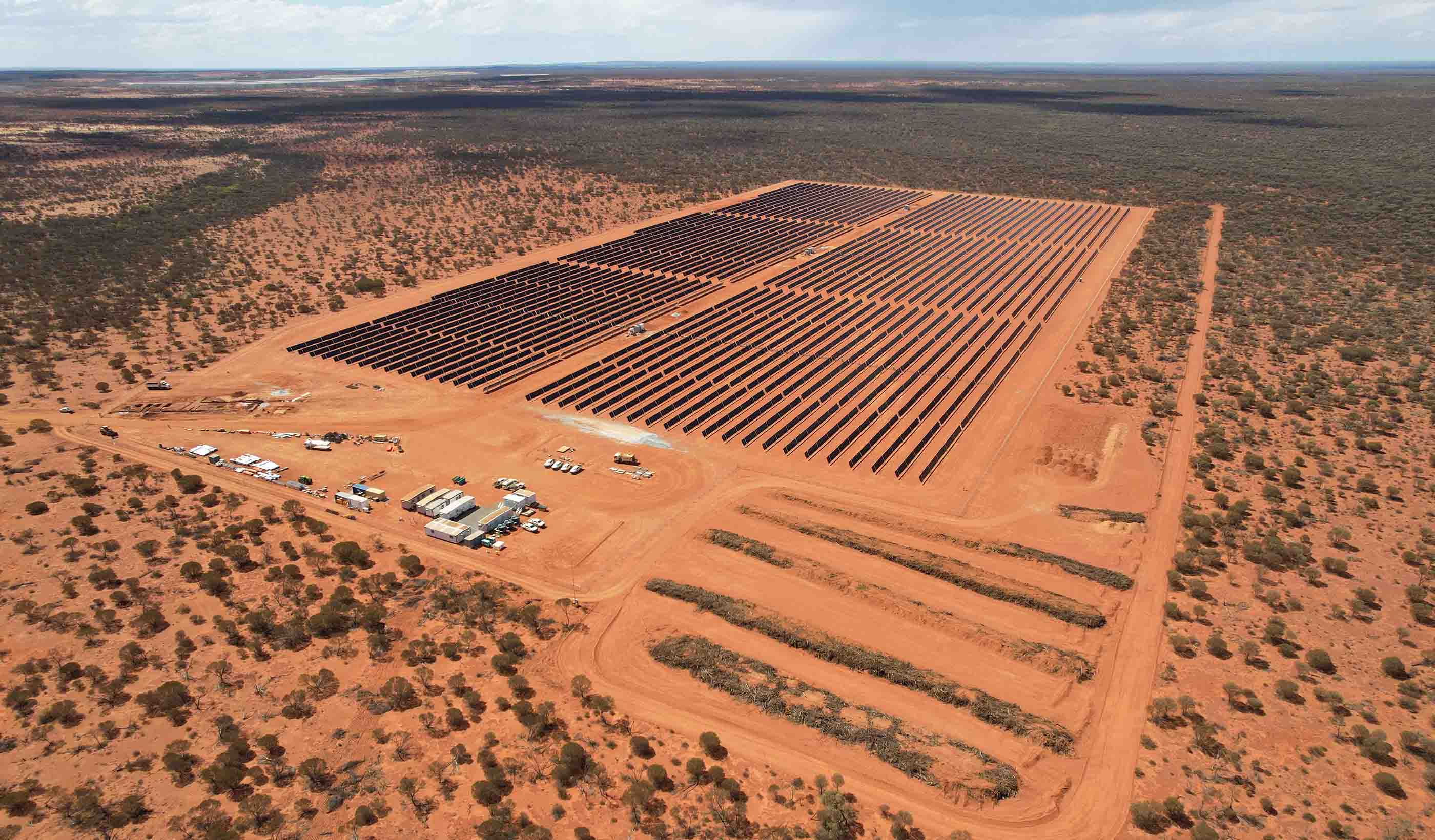Mining decarbonization is key to creating clean energy
October 26, 2023
October 26, 2023
Mining provides the materials needed for the global energy transition and is part of the push toward net zero
As the world shifts to cleaner sources of energy to combat the effects of climate change, it falls on the mining industry to provide the materials for renewable energy infrastructure. The copper that produces wind turbines. The lithium in the batteries that power electric vehicles. And the aluminum used to create solar panels—these are all products of mining.
Demand for these mined materials is only expected to increase in the coming years. It’s also expected that the mining industry will do its part by quickly decarbonizing its own assets and operations. But mining is generally seen as a high-risk and slow-to-change business. So, miners must find a way to grow while changing and bringing in new technologies that allow them to decarbonize. Not a small task, but the goal of achieving net zero mining operations is the new normal. The time to act is now.

As the world shifts to cleaner sources of energy to combat the effects of climate change, it falls on the mining industry to provide the materials for renewable energy infrastructure.
The purpose of net zero emissions is to reduce our greenhouse gas (GHG) contribution to as close to zero as possible. From there, we can use offsets for what can’t be removed. This includes the removal of all GHG emissions such as carbon dioxide, methane, nitrous oxide, and fluorinated gas emissions. Check out the quote from the United Nations:
“To keep global warming to no more than 1.5°C—as called for in the Paris Agreement—emissions need to be reduced by 45% by 2030 and reach net zero by 2050.”—United Nations
Decarbonization is a critical strategy in combating climate change and achieving the emissions reductions targets set by our mining clients. It involves a multifaceted approach. This can include policy changes, technological innovations, and widespread adoption of sustainable practices.
Decarbonization is seen as the “engine” that will pull other aspects of environmental, social, and governance (ESG) forward. Why? Because the pathway to those goals touch on all aspects of ESG. Issues such as water usage, inclusion and diversity, minimizing the impact on the environment, closure and reclamation, disclosure, and transparency are all parts of a decarbonization roadmap.
It’s clear that immediate and drastic action toward a net zero future is necessary. And it’s equally clear that this future is not possible without mining.
Key aspects of decarbonizing mining include:

Mining companies are installing and using their own renewable energy sources, like BHP’s solar project in Western Australia.
What are Scope 1, 2, and 3 emissions? This is how we categorize the different kinds of carbon emissions a mining company creates in its own operations and in its wider value chain. The term first appeared in the Green House Gas Protocol of 2001, and today the scopes are the basis for reporting GHG emissions.
Scope 1 emissions refer to direct GHG emissions. In mining, Scope 1 emissions typically come from mining operations and include:
Mining companies have direct control over Scope 1 emissions and can reduce them. They may improve equipment efficiency, switch to cleaner fuels, or capture and reduce vented gases.
Scope 2 emissions are indirect emissions from generating the energy that a mining site uses. These emissions occur where the electricity or heat used at the mine is produced. The most common source is electricity consumption, which can be used for lighting, ventilation, and various processes.
Mining companies can reduce Scope 2 emissions by focusing on renewable energy use. They can also reduce their overall energy use.
Scope 3 emissions are a broader category of indirect emissions. In any industry, these can be the hardest to measure. In mining, they involve a wide range of activities and emissions sources that are indirectly related to the mining operation but occur outside of its direct control. These emissions include:

Scope 3 upstream emissions for an open pit mine would be the emissions produced when transporting a haul truck that is used at the site.
Addressing Scope 3 emissions often involves working with suppliers, customers, and other stakeholders across the mining value chain. Reducing Scope 3 emissions is essential for a comprehensive approach to sustainability in mining. It’s critical to reducing the industry’s carbon footprint.
Most major mining companies have set net zero emissions targets for both Scope 1 and 2 emissions. These targets are critical to mining’s continued role in the energy transition. However, Scope 3 emissions dwarf those of Scope 1 and 2 emissions for most miners. So, it’s imperative that the mining industry works with upstream and downstream partners to reduce GHGs.
In September 2023, the International Council on Mining and Metals (ICMM) published guidance to improve the mining industry’s disclosure of Scope 3 emissions. It sets clear parameters for calculating emissions across the 15 categories of Scope 3 emissions in the GHG Protocol.
“Climate change is the key challenge of our generation. ICMM’s Scope 3 Emissions Accounting and Reporting Guidance will help to improve the understanding of mining and metals companies’ Scope 3 emissions profiles, as well as provide opportunities to accelerate emissions reduction.”—Jakob Stausholm, chief executive of Rio Tinto and chair of the ICMM Council’s Climate Change Advisory Group
This is an important step for the mining industry to ensure that it is a responsible partner in the energy transition and that it is doing its part for a net zero future.
The impacts of climate change that we’ve seen around the globe are a glaring signal that the time for incremental changes is over. It’s clear that immediate and drastic action toward a net zero future is necessary. And it’s equally clear that this future is not possible without mining.
The silver lining? There is an opportunity for the mining industry to be a leader in innovation and emissions reductions. Every day, we’re seeing new strides in mining operations, providing more opportunities for mine owners to help the world meet its climate goals. The time to act is now. And we can’t wait to decarbonize mining.